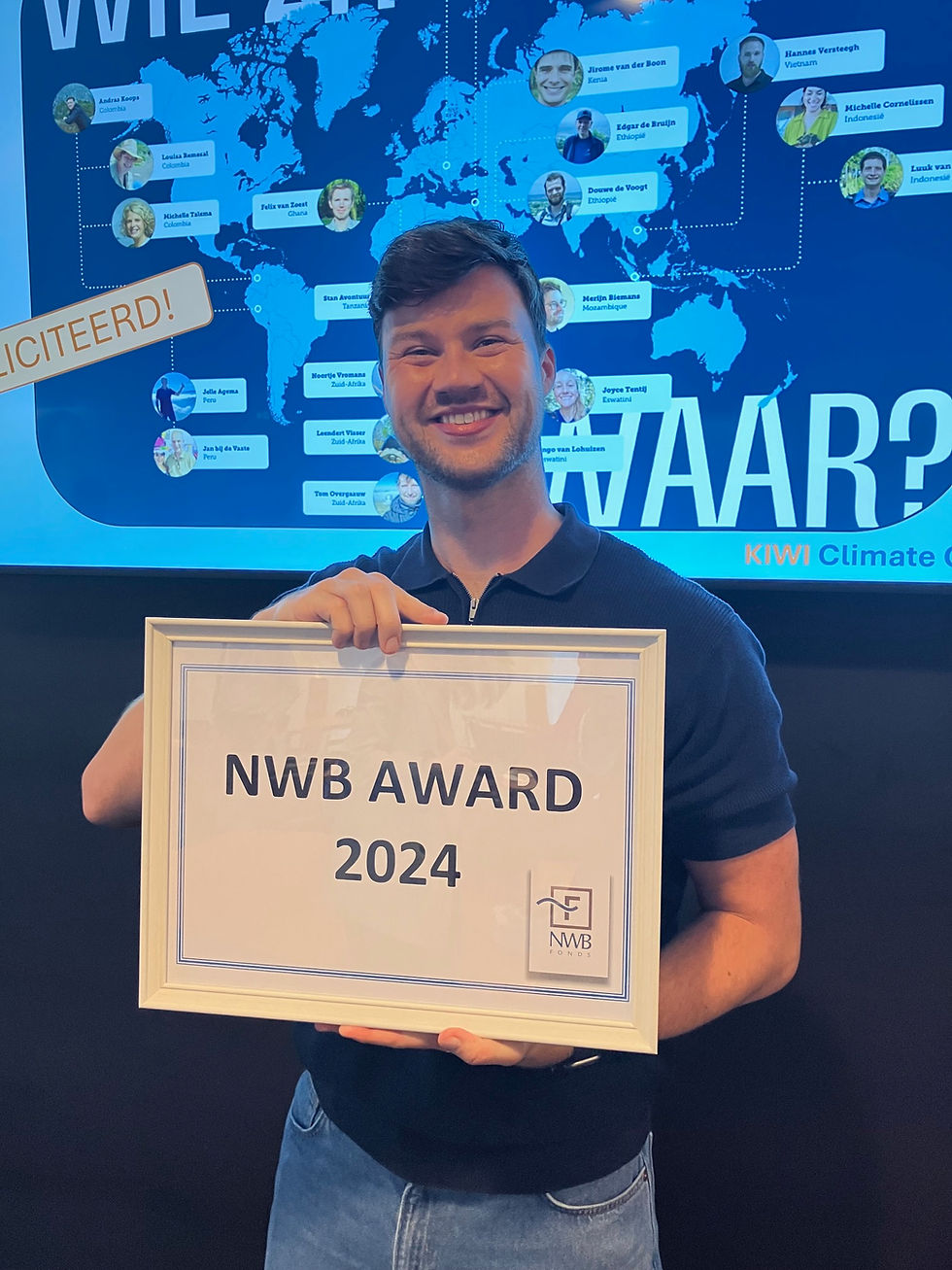NWB Fonds watershed reforestation tool
- mwierda6
- Aug 5, 2023
- 2 min read

Tree planting is often mentioned as a way to retain water in watersheds. But where do these trees have the greatest effect, and how can land users also benefit financially from them? The NWB Fonds, in collaboration with the start-up FarmTree BV, is developing a useful tool: the NWB Fonds watershed reforestation tool. This tool predicts the impact on water management of a mix of trees and crops, tailored to the soil conditions and climate of a specific area. The tool is currently being tested and further developed within the WaterWorX project in Morogoro, Tanzania.
Within this project, Wereld Waternet and the Tanzanian water company MORUWASA have been working together since 2017 with various Dutch and Tanzanian partners to improve the drinking water supply and sanitation facilities for the population of Morogoro. Integrated Water Resources Management (IWRM) is a key focus of this project. As part of this, work is currently underway to create a roadmap for the preservation and restoration of the Mindu dam watershed.

The Mindu dam provides more than 75% of the water supply for Morogoro. Due to rapid population growth, deforestation in the surrounding mountains, and climate change, less water is flowing from the rivers into the dam, while more sand is accumulating, which has reduced the dam's capacity. By taking measures in the watershed in combination with improving the dam, the water supply throughout the year is expected to improve. An important intervention is the reforestation of the surrounding mountains using agroforestry systems, among other methods, to combat erosion, retain more water, replenish groundwater, and provide farmers with an income.
The NWB Fonds watershed reforestation tool is an important tool in determining these reforestation interventions. Is the development of agroforestry systems more effective in the low, mid-altitude, or high areas of the watershed, and what does this mean in the short and long term? The tool provides insight into which areas of the region will have the greatest impact on water management. Currently, together with MORUWASA, efforts are being made to collect data for the so-called 'business as usual scenario'; what does the area look like now, which trees and crops are growing, and where is soil erosion present? The next step will be to determine locally suitable agroforestry systems that align with the needs and desires of the farmers, create a good business model, and also have relevant impacts on water management.

The tool is explicitly a decision-support tool that can provide insights to local authorities and be used to determine interventions that can be further developed and implemented in collaboration with local communities.
The NWB Fonds watershed reforestation tool is currently being tested in Tanzania, but it has already been developed to a sufficient extent to be used in other projects in different countries.
Interested? Please contact the program manager of the NWB Fonds, Marion Wierda (mwierda@uvw.nl).



